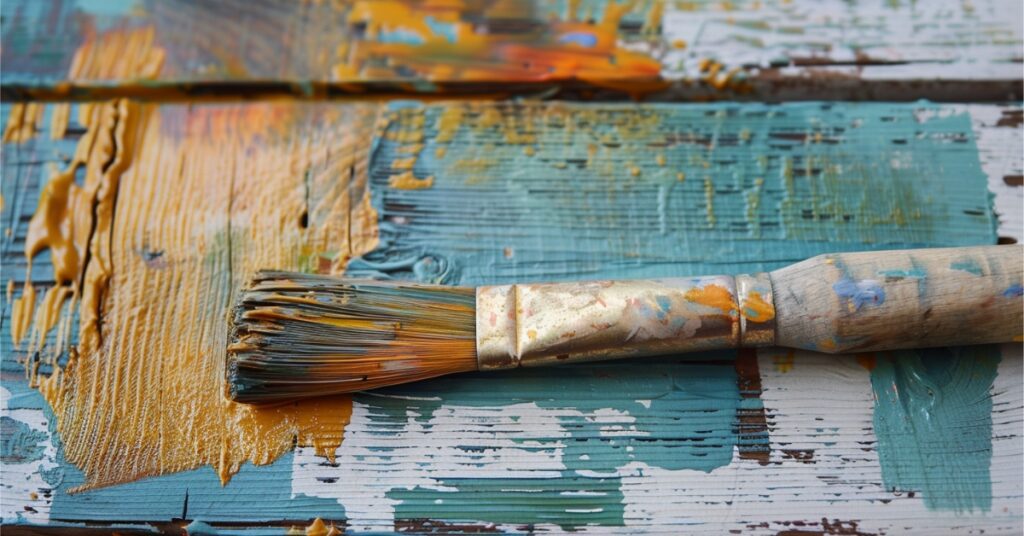Mastering the Art: How to Paint Over Stained Wood
Painting over stained wood can be transformative, breathing new life into tired furniture or outdated trim. Whether you’re looking to update a piece of wooden furniture or revitalize your interior decor, mastering the technique can unlock a world of creative possibilities. This guide will explore the step-by-step process, strategies, and tips for achieving professional-looking results when completing the task to paint over stained wood.
Understanding the Surface
Before diving into the painting process, it’s crucial to understand the nature of the stained wood surface you’ll be working with. Stained wood presents a unique challenge compared to bare wood or previously painted surfaces. The stain adds color and penetrates the wood fibers, creating a barrier that can affect paint adhesion.
Key Strategies To Paint Over Stained Wood
Preparation
Effective preparation is essential for successfully painting over stained wood. Begin by cleansing the surface using a gentle detergent and water solution to eradicate any dirt, grease, or wax accumulation.
After ensuring the wood is completely dry following the cleaning process, address scratches and chips using a scraper or wire brush to smooth out imperfections. Subsequently, fine-grit sandpaper will be used to gently roughen the stained surface gently, facilitating improved paint adhesion. Before proceeding, eliminate any residual dust or debris from the surface using a tack cloth.
Priming
Priming is essential when painting over stained wood. It helps seal the surface and provides a smooth base to which the paint can adhere.
When choosing a high-quality primer, consider whether the existing stain is oil-based or water-based. Oil-based primers are typically selected for projects that need a strong seal, particularly for outdoor use on unfinished or bare wood. Conversely, water-based primers, with their low volatile organic compounds (VOCs), are more appropriate for indoor applications. Utilize this insight to assess whether the previous stain is oil-based or water-based, guiding your primer selection.
After selecting the appropriate primer, use a brush or roller to apply it evenly across the whole surface, ensuring comprehensive coverage. Then, allow the primer to thoroughly dry in accordance with the manufacturer’s guidelines before proceeding to the subsequent step. Periodically wiping the surface with a tack cloth may be necessary to remove any lingering wet spots and ensure a smooth finish.
Choosing the Right Paint
Selecting the right paint is crucial for achieving professional-looking results when painting over stained wood. Use latex primer and paint over a water- or oil-based paint and primer over an oil-based wood stain.
In addition, factors such as the type of wood, the desired finish, and the location of the painted surface should be considered.
High-quality acrylic or latex paint can be the best choice for wooden furniture or trim due to its ease of application. If you’re painting a high-traffic area, such as a floor or staircase, consider using specialized floor paint for added durability.
Best Paint Types to Paint Over Stained Wood

Oil-Based Paint – Covers oil-based stains and suitable for all high traffic areas, durable long-lasting finish, use oil-based primer.
Latex Paint – Use over water-based stain, dries quickly, low odor and VOC’s, use latex primer.
Acrylic Paint – Use over water-based stain, mold resistance and low VOC odor, use latex or water-based primer.
Oil-Based Enamel – Opaque and sturdy to use over oil-based stain on doors, trim and cabinetry, use oil-based primer
Oil-Based Polyurethane – Contains mineral solvents and petroleum and creates a smooth and robust coating for floors, use over oil-based stain, excellent for scratch resistance, use oil-based primer.
Applying the Paint
Regarding painting, take your time and work carefully to achieve smooth, even coverage. Use a high-quality brush or roller suitable for your paint type and apply it in thin, even coats.
Avoid applying too much paint simultaneously, leading to drips, runs, and uneven coverage. Instead, gradually build the paint, allowing each coat to dry completely before applying the next. Depending on the type of paint and the desired finish, you may need to use multiple coats for full coverage and durability.
Finishing Touches
Inspect the surface for imperfections or uneven areas as you paint over stained wood and once the last coat of paint has dried. Lightly sand any rough spots or drips with fine-grit sandpaper, then wipe away dust with a tack cloth.
For robust durability and a professional finish, consider applying a clear topcoat or sealer to protect the painted surface from stains, scratches, and moisture.
Are you stressed and exhausted yet thinking about this “how to paint over stained wood” guide? As a DIY project, it can be a bit daunting.
Elevate Your Project: Transforming Stained Wood with Professional Expertise
So lessen the stress and remember that professional guidance and expertise can elevate your project as you consider the journey to paint over stained wood. Carolina Blue Painting is ready to bring your vision to life with precision and skill. Whether revitalizing furniture or refreshing interior spaces, the Carolina Blue Painting team is dedicated to delivering exceptional results to meet your desires and needs.
Contact us today to explore how Carolina Blue Painting can transform your stained wood surfaces into stunning works of art.

